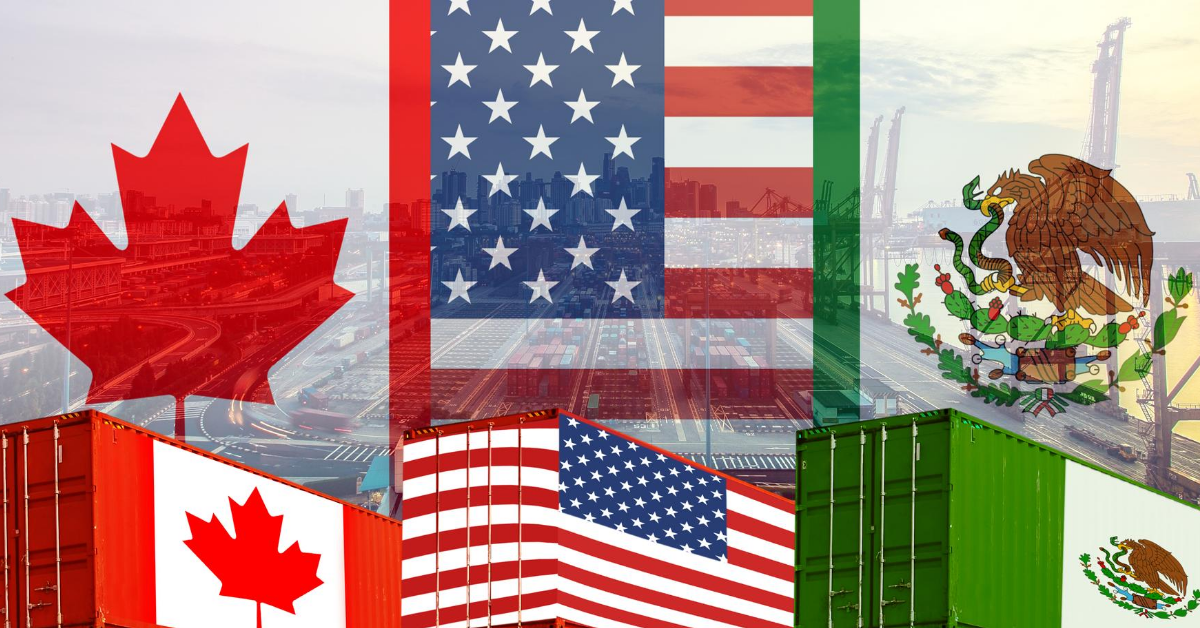The COVID-19 global pandemic has created a host of issues with shipping among the North American countries. On top of that, the new United States-Mexico-Canada Agreement (USMCA), might create additional challenges for North American auto manufacturers. The new USMCA is aimed to improve supply chain inefficiencies with a more modern approach using information technology and addressing cross-border issues and red tape but comes with stipulations that might be difficult to adhere to.
USMCA: The New NAFTA
The USMCA, which went into effect last month on July 1, 2020, has updated some areas such as digital trade, labor rights, and intellectual property rights. The USMCA requires the parties to streamline their systems by facilitating trade, improving transparency, and reducing release times and costs.
While there are new regulations with the agreement, the expected gains from it could outweigh any of the hiccups. Every day, $1.6 billion worth of trade crosses between the U.S. and Mexican borders alone. Mexico and Canada are now positioned to remain the country’s top two trading partners.
Challenges to the Auto Industry
The auto industry will be directly affected by USMCA. With the new trade agreement, at least 75% of parts in an automobile must be from North American, an increase from the former 62% under NAFTA. The agreement also states that at least 40% of workers in the auto supply chain in North America must be paid at least $16 an hour. In Mexico, these higher labor costs could result in an increased cost to the consumer. These rules might be difficult for shippers and manufacturers to prepare for as they may not have enough time to review the regulations and ensure compliance due to COVID-19.
Changes to the rules of origin would also impact how trade is conducted. Companies have evaluated how the rules of origin impacts their operations and hope that these new rules are simpler. If the standard for qualifying for an origin is easier, more items could qualify for USMCA than they did under NAFTA.
The new agreement also includes minor increases to the de minimis amount exemption from customs duties. For Canada, the de minimis did increase from $15 (CAD) to $40 (CAD), while Mexico’s original amount of $50 remains the same. There was no change for the U.S.’s level of $800 (USD) so parcel shippers can clear more shipments that are of a lower value, which is good news to smaller businesses.
Carrier Challenges
With the USMCA in effect and the global pandemic not going away anytime soon, there are challenges that carriers will have to address. Customs compliance issues, procedures for efficient distribution networks, and adhering to proper regulations for border clearance have to be considered.
Because carriers based in the U.S. cannot carry loads into Mexico beyond a 12-16 mile ‘free trade zone’ at the border, it creates one more sticking point in the shipping process between the two countries. Greg Orr, president of CFI, a north-south truckload carrier states: “Creating and building those south-of-the-border relationships is beyond important.” To combat this problem, CFI has contracted approximately 80 core carriers in Mexico to carry their truckloads beyond the free trade zone.
Section Problems
While Canada and Mexico are not subject to Section 232 tariffs on aluminum and steel imports currently, the U.S. has the ability to impose them at any time. This would increase the cost to manufacture and transport those goods. Many in the industry would like to see countries agree to a set duty among countries so manufacturers would have fixed rather than variable costs.
Going Forward
There is an obvious decrease in trade due to the global pandemic, and Mexican carriers now have extra capacity. They have lowered their rates, just as the U.S. carriers have done to fill capacity. Cross-border shipping rates will most likely continue to decline until the U.S. gets a better handle on the virus.
Once trade returns to more normal levels, shippers will need to ensure accurate information is transmitted with every shipment. Product classifications and valuations need to be completed properly electronically so cross-border traffic can move efficiently. Incorrect paperwork will cause disruptions and delays so the electronic transmission that is suggested under the agreement will become necessary.
The goal of efficient cross-border trucking should be to make is seamless and efficient. Some of the new regulations under USMCA might take some time to adjust to in the short term, however, should create a stronger trade partnership among all three countries.
Your Trusted Partner
At Red Arrow Logistics, we provide expertise and white glove customer service with fast-growing, complex, and high-value supply chains. As the next-generation model of logistics companies, we offer tailored transportation and logistics solutions — from single shipments to complex over-dimensional and international orders.
Red Arrow offers the scale and scope of services including air, ocean, and ground transportation to meet the budget and schedule requirements of the largest and smallest companies alike. If we can be of assistance, please email us at info@redarrowlogistics.com or give us a call at 425-747-7914.




